A-4/V-2 and Engine
Display, Deutsches Museum, Munich,
Germany
Special thanks:
Christoph Westhaus, Ed Straten, Rudi
Velthuis, Andreas Hempfer, Dr. Michael
Neufeld, and Bert Hartmann
This A-4/V-2 rocket and
associated equipment is located in Munich
at the Deutsches Museum
(Deutsches Museum von Meisterwerken der
Naturwissenschaft und Technik). This
rocket's unique display provides a
detailed overview of its internal
components. The photos highlight the
firing table assembly, showcasing jet
rudder adjusting brackets, the igniter and
flask, and the oxygen replenisher
coupling.
The Deutsches Museum is the world's
largest museum of technology and
science, with approximately 1.5 million
visitors per year and about 28,000
exhibited objects from 50 fields of
science and technology. The museum was
founded on June 28, 1903, on an island
in the Isar River. The island formerly
known as Kohleinsel (coal island) was
then renamed Museumsinsel (museum
island).
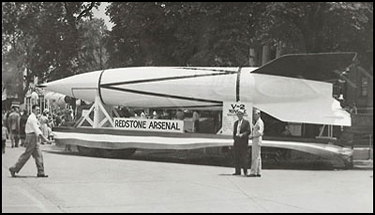
|
The early
history of the Deutsches Museum's V-2
is somewhat unclear. The rocket was
likely one of several remaining at
Redstone Arsenal in the 1950s and was
shipped to the "Deutsches Raketen und
Raumfahrtmuseum e.V." in West Germany
at their request, likely arranged by
Wernher von Braun in 1957.
The formation of the
Stuttgart Raketen und Raumfahrtmuseum
was an ambitious project rooted in the
early enthusiasm for astronautics,
emerging from Germany’s pioneering
role in rocketry. The organization
aimed to collect and exhibit
historical and contemporary technical
and literary materials related to
scientific advancements. Given the
timeframe (1954–early 1960s), it was
likely inspired by the rapid
advancements in space exploration,
including the launch of Sputnik in
1957 and the formation of NASA in
1958.
|
The effort to establish a permanent
museum originated from the Gesellschaft für
Weltraumforschung, which was founded in
Stuttgart in 1948. Both the new museum
organization and its predecessor were
members of the International Astronautical
Federation. Its collection included the V-2
rocket, V-2 internal components and post-war
literature by Stoelzel, Mohr, and the
Deutsche Raketengesellschaft für
Raketentechnik und Raumfahrt. In the late
1950s and early 1960s, the museum organized
at least 12 exhibitions in West Germany and
partnered with Columbia-Morningside Pictures
in the filming of scenes for the movie "I Aim at the Stars:
The Wernher von Braun Story."
Even
though the organization had worked
diligently to acquire necessary
museum artifacts, the Raketen und
Raumfahrtmuseum had no facilities
to display their collection. The
V-2 arrived in Stuttgart painted
black and white—in its original
White Sands scheme, but was later
repainted gray-green, as seen in
promotional tour photos for the
von Braun movie premiere. The V-2
and its launch table were
repeatedly moved between storage
sheds and temporary exhibitions.
Ultimately, the Raketen und
Raumfahrtmuseum never succeeded in
building a permanent museum
facility and in 1962 the ownership
of the V-2 was transferred to the
Deutsches Museum in Munich.
After
arriving in Munich, the rocket was
refurbished and modified to
display its internal tanks,
propulsion, and guidance systems.
It was again repainted in the same
black and white WSPG "Bumper"
scheme. The V-2 was briefly
displayed in the early 1960s at
the Welt und Raumfahrt Ausstellung
in Berlin, before returning to
Munich. Since 1983, the rocket has
been displayed upright on its
launching table, encircled by a
staircase, in the Deutsches
Museum's Aviation Hall.
|

-
WEIT UND RAUMFAHRT AUSTELLUNG
BERLIN, EARLY 1960S
|
-
PROMOTIONAL
PHOTOS FOR THE 1960 MOVIE
"I AIM AT THE
STARS" - COLUMBIA PICTURES
|
In 2015, a
comprehensive renovation of the
aviation hall was undertaken,
resulting in the temporary
displacement of numerous historical
artifacts. However, the V-2 rocket,
encased inside the winding staircase,
could not be easily moved. Because of
its fixed location, the V-2 rocket
presented a challenge during the
renovation process.
To ensure its
preservation and protect it from the
inevitable dust and debris generated
by the extensive overhaul, a
specialized protective measure was
implemented. The large missile was
carefully enclosed within a
custom-built, pressurized wooden box.
This airtight enclosure served to
shield the rocket from airborne
particles and maintain a stable
internal environment, safeguarding it
throughout the duration of the hall's
transformation.
Later, museum officials
made the unexpected decision to alter
the staircase and rebuild the rooftop
restaurant. This required the removal
of the wooden structure around the
V-2, which was replaced with layers of
foil and foam. Unfortunately, poor
construction techniques allowed water
to seep in, rendering the new
protective measures ineffective.
Due to ongoing
construction, the rocket couldn't be
unpacked immediately, and the damage
was discovered weeks later. The museum
is currently assessing the extent of
the damage and attempting conservation
efforts. However, absent a
full and comprehensive dismantling
procedure, the structural integrity of
the rocket is projected to undergo
continued and accelerated degradation.
It is anticipated that its condition
will only worsen as time passes and
further decomposition will occur.
|

-

PHOTOS BELOW: DEUTSCHES MUSEUM V-2
2024
-
PHOTOS BELOW: DEUTSCHES MUSEUM
LAUNCH TABLE
The
Deutsches Museum Abschussplattform is the most
complete surviving V-2 launch table,
showcasing all launch preparation components,
including the five-way coupling, valve box and
bracket, oxygen top-off connection, cable mast
bracket, and pyrotechnic igniter.
-
|
 |
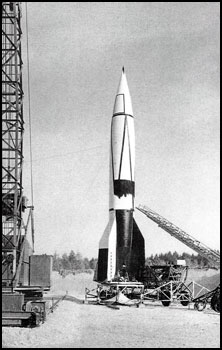
-
I AIM AT THE STARS 1959, DM
|
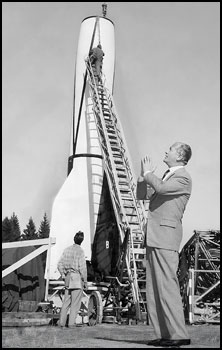 -
-
CURT JURGENS AS VON BRAUN,
UPI, DM |
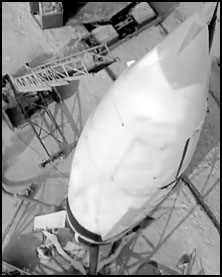 -
-
I AIM AT THE STARS 1959, DM |
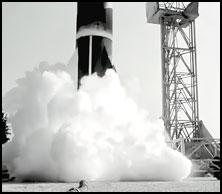
-
I AIM AT THE STARS 1959, DM |
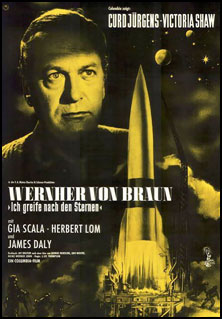 -
-
I AIM AT THE STARS 1960 |
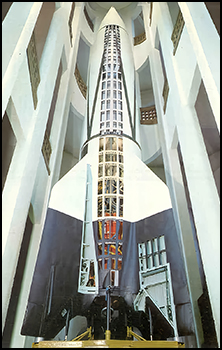 -
-
DEUTSCHES MUSEUM V-2 1993 |
|
Deutsches Museum - Museum Island
Museumsinsel
1
80538
Munich
Telephone
+49 89 2179 333
visitorservice@deutsches-museum.de
Open
daily from 9 AM to 5 PM
Entrance
to the museum until 4.30 PM
|

